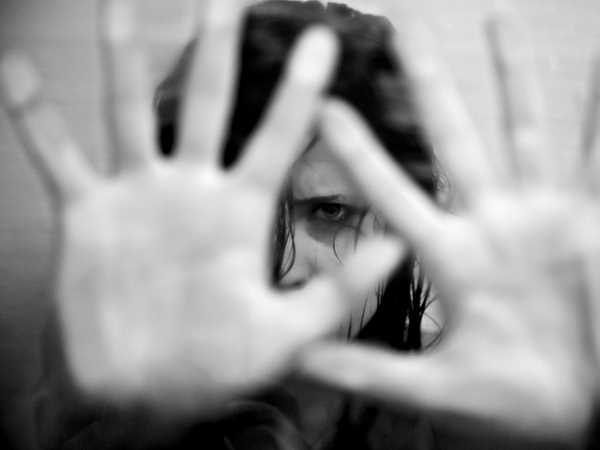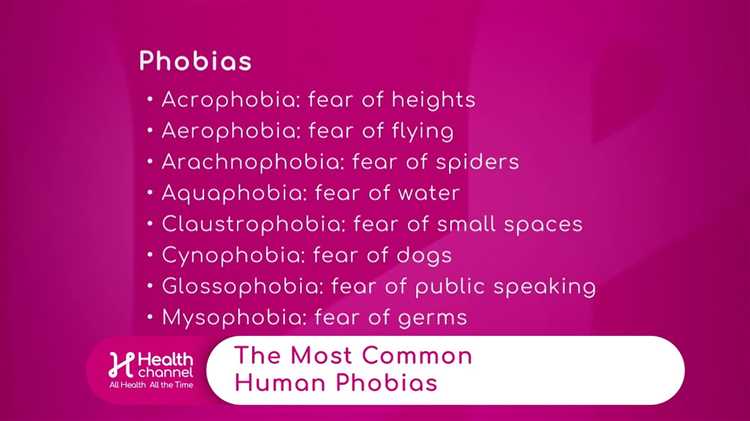Phobias are irrational and intense fears that can have a significant impact on a person’s daily life. While most people are familiar with common phobias like arachnophobia (fear of spiders) or claustrophobia (fear of closed spaces), there are many lesser-known phobias that can be just as interesting. Here are 10 fascinating facts about phobias that you probably didn’t know:
1. Phobias are more common than you might think: It is estimated that phobias affect about 10% of the population. That means approximately 1 out of every 10 people has some form of phobia.
2. There are over 500 different phobias documented: While some phobias are more prevalent than others, there is an extensive list of documented phobias. From fear of clowns (coulrophobia) to fear of peanut butter sticking to the roof of the mouth (arachibutyrophobia), there seems to be a phobia for just about everything.
3. Phobias can be inherited: Research has shown that phobias can run in families. If one or both of your parents have a phobia, you may be more likely to develop one yourself.
4. Exposure therapy is one of the most common treatments: One of the most effective treatments for phobias is exposure therapy. This involves gradually exposing the person to what they fear in a controlled and safe environment, helping them to become less anxious over time.
5. Some phobias are specific to certain cultures: While some phobias are universal, others are specific to certain cultures. For example, taijin kyofusho is a cultural phobia found in Japan, characterized by a fear of offending or embarrassing others.
Origin of the Word “Phobia”
The word “phobia” originates from the Greek language. It comes from the Greek word “phóbos,” which means “fear” or “flight.” In ancient Greek mythology, Phobos was the god of fear and terror, often depicted as a grotesque figure. The term “phobia” was first introduced by the German psychiatrist Karl Friedrich Westphal in the late 19th century.
Phobias are classified as anxiety disorders characterized by a persistent fear of specific objects or situations. These irrational fears can cause extreme distress and avoidance behaviors. The word “phobia” is used to describe this intense fear and anxiety experienced by individuals with a specific phobia.
Phobias can develop as a result of negative experiences or traumatic events, as well as through learned behaviors. They can also be influenced by cultural factors and societal norms. Some phobias are more common than others, such as arachnophobia (fear of spiders) or acrophobia (fear of heights), while others are more rare or specific to certain cultures.
Common Types of Phobias
Phobias are extreme and irrational fears of specific objects, situations, or activities. While there are countless phobias that people may experience, some are more common than others. Here are some of the most common types of phobias:
- Arachnophobia: Fear of spiders.
- Agoraphobia: Fear of being in situations where escape might be difficult, such as crowded places or open spaces.
- Acrophobia: Fear of heights.
- Claustrophobia: Fear of confined spaces.
- Social Phobia: Fear of social situations and being judged by others.
- Aviophobia: Fear of flying.
- Mysophobia: Fear of germs and dirt.
- Trypophobia: Fear of clusters of small holes or bumps.
- Emetophobia: Fear of vomiting.
- Thanatophobia: Fear of death.
It’s important to note that phobias can vary in severity. Some individuals may have mild anxiety in certain situations, while others may experience intense panic attacks. If your phobia is interfering with your daily life or causing significant distress, it may be helpful to seek professional help for treatment.
Impact of Phobias on Daily Life
Phobias can significantly affect a person’s daily life, causing distress, anxiety, and even avoidance of certain situations or objects. Here are some ways in which phobias can impact daily life:
- Difficulty functioning: Phobias can make it hard for individuals to engage in regular activities, such as going to work, school, or socializing. The fear and anxiety associated with phobias can be overwhelming and can interfere with daily functioning.
- Physical symptoms: People with phobias may experience physical symptoms, such as rapid heartbeat, sweating, trembling, or shortness of breath, when faced with their phobic object or situation.
- Avoidance behavior: Many individuals with phobias go to great lengths to avoid encountering the object or situation that triggers their fear. This can lead to limitations in daily life and may impact their ability to enjoy activities or pursue hobbies.
- Emotional distress: Phobias can cause intense emotional distress, including feelings of fear, panic, and helplessness. These emotions can be highly disruptive and can make it difficult for individuals to focus on tasks or cope with everyday stressors.
- Impact on relationships: Phobias can strain relationships, as individuals may be unable to participate in certain activities or attend social events due to their fear. This can lead to feelings of isolation and may affect the dynamics of personal relationships.
- Impact on mental health: Living with a phobia can also contribute to the development or exacerbation of other mental health conditions, such as anxiety disorders or depression. It is not uncommon for individuals with phobias to experience high levels of comorbidity with other mental health disorders.
- Limitations in career: Depending on the nature of the phobia, it can also impact a person’s career choices or advancement opportunities. For example, if someone has a phobia of flying, they may be limited in job options that require travel.
- Financial implications: Phobias can have financial implications, as individuals may need to pay for treatments, therapy sessions, or other resources to manage and cope with their phobia.
- Impact on overall quality of life: Ultimately, phobias can significantly lower a person’s overall quality of life. They can limit opportunities, hinder personal growth, and lead to a reduced sense of well-being and satisfaction.
It is important for people with phobias to seek professional help and support to manage and overcome their fears, enabling them to lead a fulfilling and less restricted life.
Surprising Phobias You Might Not Expect
Phobias are a common and often misunderstood aspect of human psychology. While many people are aware of common phobias such as arachnophobia (fear of spiders) or acrophobia (fear of heights), there are some phobias that are less well-known but just as fascinating. Here are some surprising phobias you might not expect:
-
Papaphobia: This is the fear of the Pope or the papacy. It can be attributed to various reasons such as religious beliefs, political ideologies, or a traumatic experience related to the Pope.
-
Chrometophobia: This phobia refers to the fear of money. Individuals with this phobia may experience extreme anxiety when handling money or even avoid it altogether.
-
Heliophobia: Heliophobia is the fear of sunlight or any source of bright light. This phobia can lead to anxiety or panic attacks in individuals when exposed to sunlight or bright lights.
-
Geniophobia: Geniophobia is the fear of chins. People with this phobia may feel intense anxiety or discomfort when looking at or touching chins, including their own or others’.
-
Pteronophobia: This phobia involves a fear of being tickled by feathers. Those with pteronophobia may experience strong feelings of anxiety or even panic attacks when exposed to feathers.
-
Venustraphobia: Venustraphobia is the fear of beautiful women. This phobia can stem from a variety of underlying issues, such as low self-esteem or fear of rejection.
-
Spectrophobia: Spectrophobia is the fear of mirrors or one’s own reflection. It can cause extreme anxiety and may be associated with body dysmorphic disorder or other mental health conditions.
-
Omphalophobia: This phobia refers to the fear of belly buttons or navels. Individuals with omphalophobia may avoid touching or looking at belly buttons and may experience anxiety or panic when exposed to them.
-
Teleophobia: Teleophobia is the fear of definite plans or making decisions. Those with teleophobia may feel overwhelming anxiety or fear when faced with making concrete plans or choices.
-
Arachibutyrophobia: Arachibutyrophobia is the fear of peanut butter sticking to the roof of the mouth. People with this phobia may avoid eating peanut butter or experience intense anxiety or panic if it sticks to their mouth.
These lesser-known phobias serve as a reminder of the vast range of fears that can affect individuals. While some phobias may seem unusual or irrational to others, they are very real for those who experience them. Understanding and empathy can go a long way in helping individuals cope with their phobias and live fulfilling lives.
Causes of Phobias
Phobias are irrational and intense fears of specific objects, situations, or activities. They can cause significant distress and interfere with daily life. While the exact cause of phobias is not fully understood, several factors can contribute to their development:
- Genetic predisposition: Some studies suggest that phobias can run in families, indicating a genetic component. Individuals with close relatives who have phobias may be more likely to develop them themselves.
- Brain activity: Researchers have identified specific patterns of brain activity in individuals with phobias. These patterns suggest that certain areas of the brain, such as the amygdala, which is involved in the processing of fear, may be overactive or hypersensitive in people with phobias.
- Traumatic experiences: Phobias can be triggered by traumatic experiences. For example, someone who has had a traumatic encounter with a dog may develop a specific phobia of dogs. The fear becomes associated with the specific object or situation, leading to an irrational fear response.
- Learned behavior: Phobias can also be learned through observation or direct experiences. Children may develop phobias by watching others react fearfully to certain objects or situations. Additionally, a person may develop a phobia after experiencing a panic attack or extreme anxiety in a specific situation.
- Cultural and societal influences: The prevalence of certain phobias can vary across different cultures and societies. This suggests that cultural and societal factors play a role in the development and maintenance of phobias. For example, some cultures may have specific fears or aversions to animals or objects that are not present in other cultures.
It is important to note that phobias are complex and can have multiple causes. Each individual may have a unique combination of genetic, environmental, and personal factors that contribute to the development of their specific phobia.
Unusual Treatments for Phobias
Phobias can be debilitating and affect a person’s daily life. While traditional treatments such as therapy and medication are often effective, there are some unusual and lesser-known treatments that have been explored. Here are some intriguing approaches:
- Hypnotherapy: Hypnotherapy involves using hypnosis to access the subconscious mind and address the root cause of the phobia. It aims to reframe thoughts and beliefs surrounding the fear.
- Virtual reality therapy: Virtual reality therapy exposes individuals to simulated situations that trigger their phobias. This allows them to confront their fears in a controlled environment.
- Exposure therapy: Exposure therapy gradually exposes individuals to their phobias, starting with less intense situations and gradually increasing the level of exposure. This method helps desensitize individuals to their fears.
- Animal-assisted therapy: Animal-assisted therapy involves interacting with animals, such as dogs or horses, to reduce anxiety and promote relaxation. This therapy can be particularly helpful for individuals with animal-based phobias.
- Acupuncture: Acupuncture is believed to rebalance the body’s energy flow. Some individuals have reported reduced anxiety and fear levels following acupuncture sessions.
- Equine therapy: Equine therapy uses interactions with horses to help individuals develop trust, confidence, and emotional regulation. It can be especially beneficial for individuals with phobias related to trust or control.
- Aromatherapy: Aromatherapy utilizes essential oils to promote relaxation and reduce anxiety. Certain scents, such as lavender or chamomile, may help individuals feel calmer when facing their phobias.
- Art therapy: Art therapy allows individuals to express their fears and emotions through creative means, such as painting or drawing. This therapeutic approach can help individuals process and cope with their phobias.
- Music therapy: Music therapy involves using music to address emotional and psychological issues. Listening to calming music or creating music can help individuals manage their anxiety and fears.
- Eye movement desensitization and reprocessing (EMDR): EMDR combines exposure therapy with bilateral stimulation, such as eye movements or hand taps, to help individuals process and reduce the impact of traumatic experiences and phobias.
It’s important to note that these unusual treatments may not work for everyone and should be discussed with a qualified healthcare professional. However, for individuals seeking alternative approaches or looking to complement traditional treatments, these options may be worth exploring.
Connection Between Phobias and Anxiety Disorders
Phobias and anxiety disorders often go hand in hand, as both are characterized by intense fear and avoidance behaviors. While phobias are specific fears of certain objects or situations, anxiety disorders encompass a broader range of fears and worries.
1. Shared Symptoms: Phobias and anxiety disorders share many symptoms, including increased heart rate, rapid breathing, sweating, trembling, and a sense of impending doom. These physical and emotional responses are triggered by the presence or anticipation of the feared object or situation.
2. Comorbidity: It is not uncommon for individuals with a phobia to also have an anxiety disorder, such as generalized anxiety disorder or social anxiety disorder. In fact, research suggests that about 75% of individuals with a specific phobia also meet criteria for another anxiety disorder.
3. Underlying Mechanisms: Both phobias and anxiety disorders are believed to arise from a combination of genetic, environmental, and psychological factors. Traumatic experiences, learned fear responses, and an overactive amygdala (the brain’s fear center) may all contribute to the development of these conditions.
4. Cognitive Aspects: Both phobias and anxiety disorders involve cognitive aspects, such as irrational thoughts and beliefs about the feared object or situation. These thoughts can perpetuate and intensify the fear response, leading to avoidance behaviors and further distress.
5. Impact on Functioning: Phobias and anxiety disorders can significantly impact an individual’s daily functioning and quality of life. They may avoid certain situations, limit their activities, and experience difficulty participating in work, school, or social activities due to their fears and anxieties.
6. Treatment Approaches: Cognitive-behavioral therapy (CBT) is an effective treatment for both phobias and anxiety disorders. CBT helps individuals identify and challenge their irrational thoughts and beliefs, develop coping strategies, and gradually confront their fears through exposure therapy.
7. Overlap with Other Disorders: Phobias and anxiety disorders often co-occur with other mental health conditions, such as depression or obsessive-compulsive disorder. This can complicate treatment and may require a comprehensive approach addressing all underlying issues.
8. Prevalence: Anxiety disorders are the most common mental health conditions, affecting approximately 18% of the population in the United States. Phobias are also relatively common, with specific phobias affecting about 12.5% of individuals at some point in their lives.
9. Gender Differences: Women are more likely than men to be diagnosed with anxiety disorders and phobias. This may be due to a combination of biological, hormonal, and societal factors, though more research is needed to fully understand the gender differences in these conditions.
10. Successful Management: With proper diagnosis and treatment, many individuals with phobias and anxiety disorders can successfully manage their symptoms and lead fulfilling lives. It is important to seek professional help if these conditions significantly impact daily functioning or cause significant distress.
Phobias in Pop Culture and Media
Phobias, with their irrational fears and intense reactions, have always been a fascinating subject for artists and storytellers. Here are some examples of phobias in pop culture and media:
- Arachnophobia: This phobia, the fear of spiders, has been a popular topic in horror movies. Films like “Arachnophobia” (1990) and “Eight Legged Freaks” (2002) exploit people’s fear of these creepy crawlies for maximum scare factor.
- Claustrophobia: The fear of confined spaces, claustrophobia, has been used in various movies and TV shows to create tension and suspense. One notable example is the film “Buried” (2010), where the protagonist is trapped in a coffin.
- Ailurophobia: This phobia, the fear of cats, has been portrayed in popular culture as well. In the book and movie series “Harry Potter,” the character Dolores Umbridge is known for her extreme aversion to cats.
- Acrophobia: The fear of heights, acrophobia, has been featured in many action and adventure movies. For example, in the film “Mission: Impossible – Ghost Protocol” (2011), Tom Cruise’s character scales the Burj Khalifa, the tallest building in the world.
- Ophidiophobia: The fear of snakes, ophidiophobia, has been a common theme in horror movies. Films like “Anaconda” (1997) and “Snakes on a Plane” (2006) exploit people’s fear of these slithering creatures.
These examples show how phobias can be effectively used in entertainment to evoke strong emotions and create memorable moments. However, it’s important to remember that phobias are genuine and debilitating for those who suffer from them, and should not be trivialized or exploited.
Questions and answers
What is a phobia?
A phobia is an extreme or irrational fear of a specific object, situation, or activity. It is a type of anxiety disorder.
What are some common phobias?
Some common phobias include arachnophobia (fear of spiders), acrophobia (fear of heights), claustrophobia (fear of confined spaces), and agoraphobia (fear of open spaces).
How are phobias treated?
Phobias can be treated through exposure therapy, cognitive-behavioral therapy, and medication. These treatments aim to help individuals face their fears and reduce the anxiety associated with phobias.
Are phobias more common in women or men?
Phobias are more common in women than in men. This may be due to a combination of biological, psychological, and sociocultural factors.


